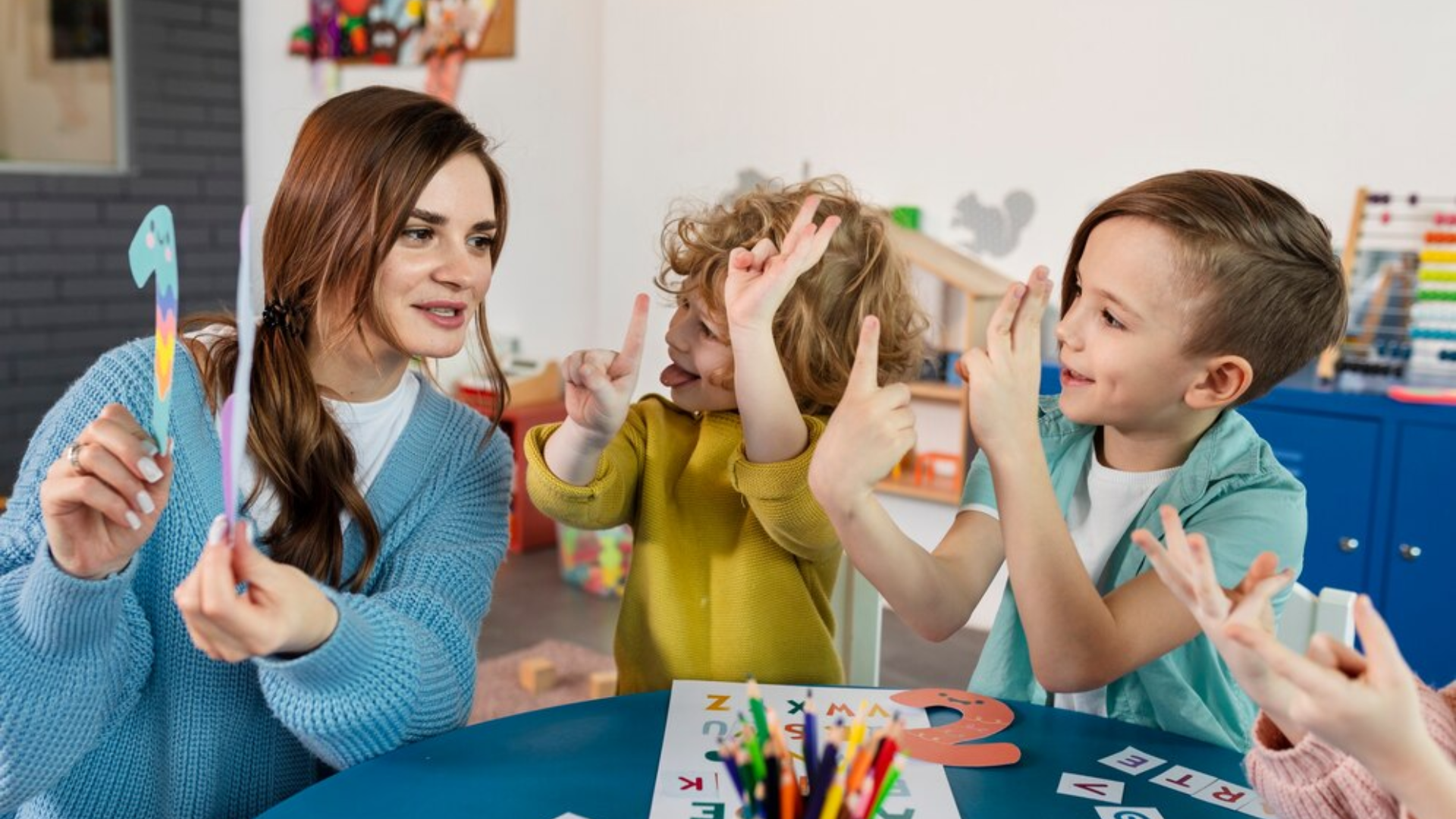How to Encourage Independence in Toddlers

The toddler years are a time of tremendous growth and discovery. During this stage, children begin to express their personalities, explore their surroundings with curiosity, and seek to do things on their own. This growing desire for autonomy is not just a phase—it’s a critical developmental milestone.
At Oakridge Children’s Academy, we believe that supporting independence in toddlers builds a strong foundation for lifelong learning, confidence, and problem-solving. Encouraging independence doesn’t mean expecting toddlers to do everything on their own. Instead, it means giving them the tools, opportunities, and support they need to take small steps toward doing things for themselves.
Here’s how you can nurture independence in your toddler in a way that is age-appropriate, encouraging, and empowering.
1. Create a Safe and Supportive Environment for Exploration
The first step in fostering independence is ensuring that your child feels safe to explore their world. A secure environment allows toddlers to try new things, take reasonable risks, and develop trust in their own abilities.
Here’s how to set up an independence-friendly environment at home:
Child-proof the space so your toddler can explore without constant intervention. This includes anchoring furniture, covering outlets, and keeping unsafe items out of reach.
Make commonly used items accessible—store toys, clothes, snacks, and books at their level so they can make their own choices.
Provide open-ended materials such as blocks, art supplies, and pretend play props that encourage creativity and self-directed learning.
When children feel that their environment is built with them in mind, they’re more likely to explore it with confidence and a sense of ownership.
2. Offer Choices to Empower Decision-Making
Toddlers have a natural desire to assert themselves. Offering choices helps satisfy this need while giving them a sense of control and responsibility. Even small decisions can build confidence and teach problem-solving skills.
Some examples of age-appropriate choices include:
“Would you like to wear the red shirt or the blue one?”
“Do you want apple slices or banana with your snack?”
“Would you like to read a book or play with blocks first?”
When offering choices, make sure both options are acceptable to you. Avoid overwhelming your toddler with too many options at once—two or three choices are often ideal. This practice teaches decision-making while reducing the likelihood of power struggles.
3. Encourage Self-Help Skills
Daily routines provide countless opportunities for toddlers to practice independence. While it may be quicker and easier for adults to do things for them, allowing toddlers to participate in self-care builds self-confidence and resilience.
Support your toddler in learning self-help skills by:
Letting them dress themselves, even if the clothes don’t quite match
Encouraging them to wash their hands, brush their teeth, and use the potty with supervision
Teaching them how to put away toys and help set the table
Involving them in simple household chores like folding washcloths or watering plants
Expect some messes and mistakes—these are all part of the learning process. What matters most is your encouragement and patience as they gain competence over time.
4. Use Language That Supports Autonomy
The way we speak to toddlers can either encourage independence or reinforce dependence. Use language that communicates trust in their abilities and promotes a sense of agency.
Instead of:
“Let me do that for you.” Try:
“Would you like help, or do you want to try by yourself first?”
Instead of:
“You’re not big enough for that.” Try:
“Let’s try it together and see how it goes.”
Reinforce their efforts with phrases like:
“You worked really hard to do that on your own.”
“I saw how you tried a new way when it didn’t work the first time.”
“Look what you figured out by yourself!”
Empowering language not only boosts your child’s confidence but also encourages persistence, curiosity, and a willingness to try new things.
5. Be Patient and Accept Imperfections
Encouraging independence means allowing your child to struggle sometimes—and being okay with imperfection. A toddler tying their shoes, feeding themselves, or picking out clothes might take longer or create a mess, but these experiences are valuable learning opportunities.
Here are some tips for managing expectations:
- Build in extra time during transitions and routines to let your toddler try things on their own.
- Resist the urge to immediately step in and “fix” things. Pause and see how your child approaches the challenge.
- Celebrate effort over outcome. Say things like, “You tried really hard to zip your jacket today!”
Independence takes time to develop. Your patience, support, and consistency will pay off as your toddler becomes more confident and capable.
6. Set Consistent Routines to Build Responsibility
Toddlers thrive on predictability. A consistent daily routine gives them a sense of security and allows them to anticipate what’s coming next. Over time, routines help toddlers internalize structure and begin to take initiative without being prompted.
Use visual schedules, songs, or picture cues to help toddlers understand the order of events. For example:
Morning routine: wake up, potty, get dressed, breakfast
Bedtime routine: bath, pajamas, storytime, sleep
Assign small, consistent responsibilities throughout the day. Even young toddlers can:
Put dirty clothes in the hamper
Bring their plate to the sink
Help pack their bag for daycare
When children know what’s expected, they’re more likely to participate with confidence and independence.
7. Offer Encouragement, Not Pressure
Toddlers are still learning how to navigate their emotions, boundaries, and capabilities. While it’s important to provide opportunities for independence, it’s equally important not to pressure or shame your child for needing help.
Some days your toddler may want to “do it all by myself,” and other days they’ll ask you to do it for them. This is normal. Respect their pace and offer support when needed.
Encouragement sounds like:
“I see you’re feeling frustrated. Let’s take a deep breath and try again together.”
“It’s okay to need help sometimes. I’m here for you.”
“You’re learning so much every day. I’m proud of you.”
Balancing encouragement with empathy helps your child develop both confidence and emotional resilience.
Why Independence Matters in Early Childhood
Supporting your toddler’s independence isn’t just about making daily life easier. It’s about nurturing the qualities that will shape them into thoughtful, capable, and resilient individuals. When toddlers are encouraged to take initiative, make choices, and solve problems, they learn to believe in themselves. They also develop critical life skills such as:
Self-regulation and patience
- Responsibility and accountability
- Motivation and persistence
- Confidence in new situations
- A love of learning
At Oakridge Children’s Academy, our classrooms are thoughtfully designed to support independence. We believe that every child is capable and deserving of opportunities to grow at their own pace. Our teachers gently guide toddlers as they explore, learn, and develop confidence in a warm and nurturing environment.
To ensure your child thrives in a preschool environment, it’s important to understand how play supports their learning. Our post on 5 Ways to Support Your Child’s Learning Through Play offers practical tips for parents, while our blog on What to Look for in a High-Quality Preschool Program highlights the essential features of a program that fosters both play-based learning and academic growth.
Conclusion
Encouraging independence in toddlers isn’t about stepping away—it’s about stepping alongside them as they grow. By creating supportive environments, offering meaningful choices, and allowing space for exploration and mistakes, you help lay the groundwork for your child’s confidence, resilience, and lifelong love of learning.
At Oakridge Children’s Academy, we believe that independence is a vital part of early childhood development. Through intentional teaching and a nurturing environment, we empower children to become curious, capable, and self-assured learners. When home and school work hand in hand to support independence, children thrive in every area of their development.
Whether it’s zipping up a jacket, pouring a glass of water, or choosing which book to read, each act of independence is a milestone worth celebrating. With your guidance and encouragement, your toddler will gain the confidence to take on new challenges—and discover just how much they are capable of achieving.










